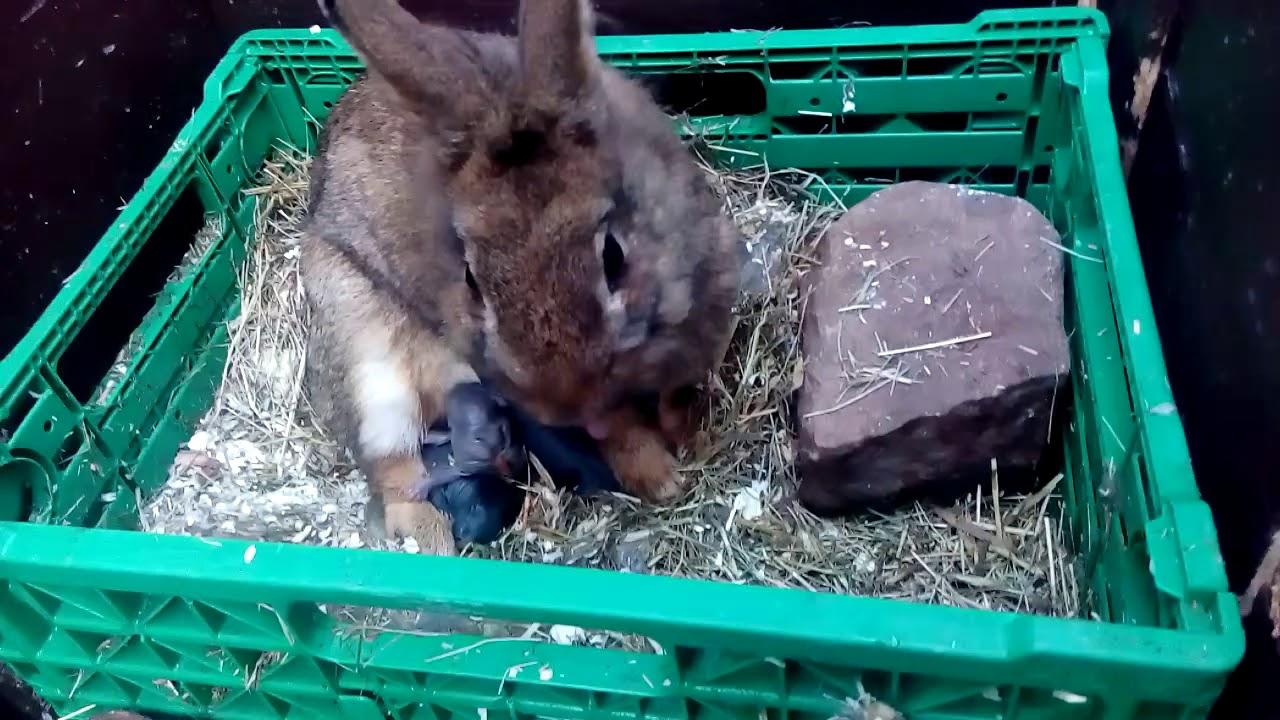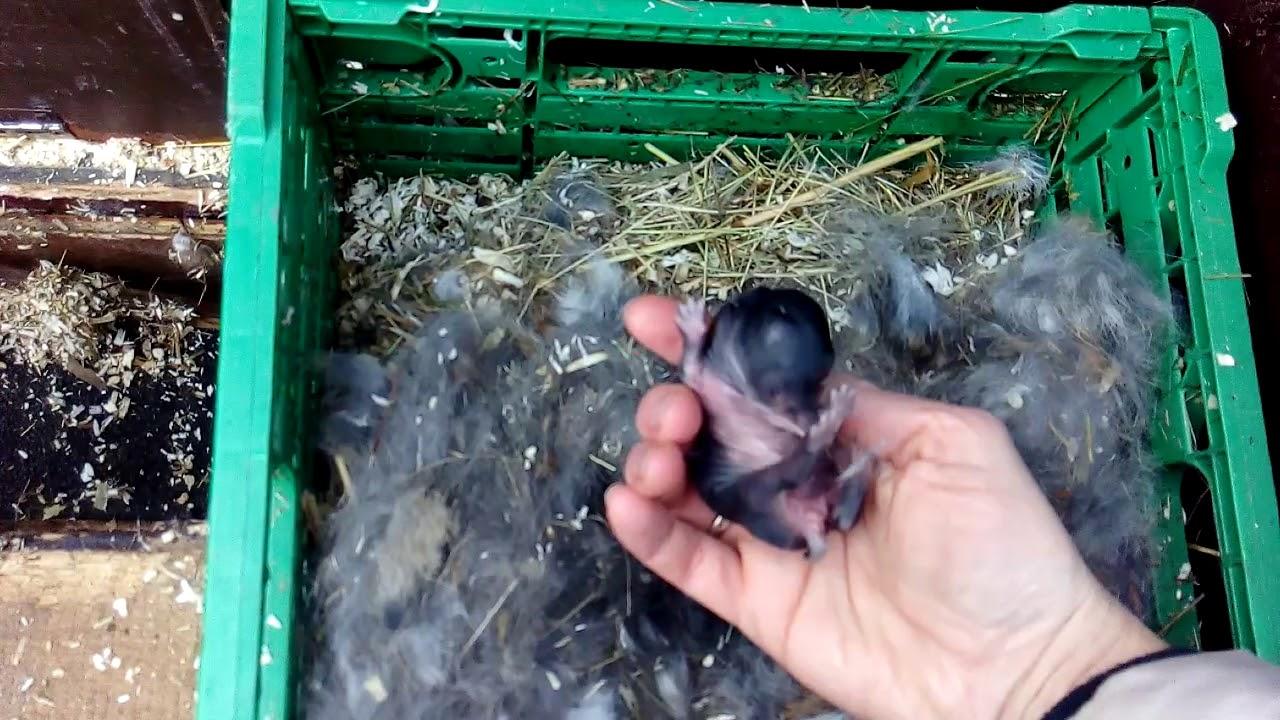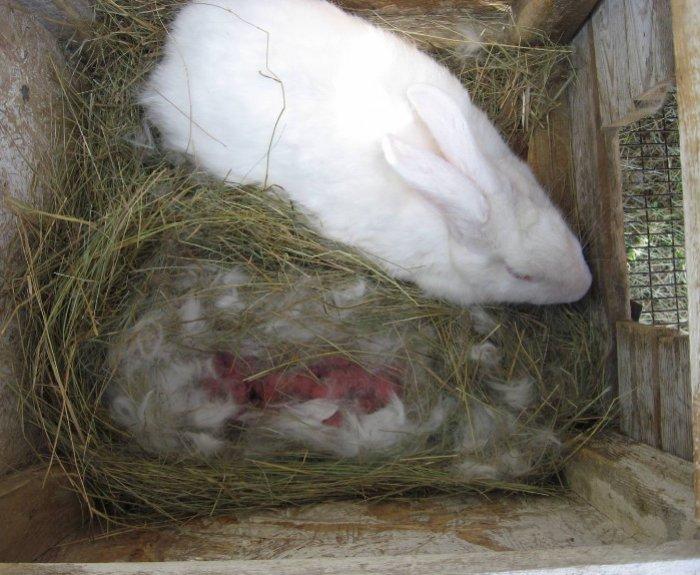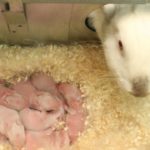Animals of the order Lagomorpha reproduce very quickly. In order to produce offspring several times a year, avoid undesirable consequences and not harm the uterus, the breeder must have an idea about the birth of the female rabbit and the number of offspring. The quality characteristics of the litter are affected by the age of the female, diet, living conditions and breed.
How do rabbits give birth?
The birth of babies occurs 28-34 days after mating. The more babies, the shorter the gestation period. The breeder will understand that the breeding is approaching by the restless state of the female. In the queen cell, the female rabbit begins to make a nest from straw and wool.
Lambing time is early morning or night. The expectant mother rarely needs the owner's help. His main task is not to interfere, to quietly control the process. The rabbit's maternal instinct is extremely developed; she herself knows what to do. After the birth of the last baby, the female rabbit bites the umbilical cord, licks the children, and eats the afterbirth.
On average, a birth lasts from 20 to 30 minutes. If the female cannot give birth for more than 1 hour, you need to seek help from a veterinarian.
How many rabbits are born to a female rabbit?
During one lambing, the female rabbit brings from 4 to 12 babies. The number of children depends on the tribe, age, living conditions of the female and diet. Representatives of decorative breeds give birth to up to 6 rabbits at a time, mammals of the medium weight category breed 8-12 individuals, giants can produce up to 16 individuals.
A female who becomes a mother for the first time has a small offspring (3-5 babies). Also, lambing rates are low in obese animals. Their sexual desire weakens, the rhythm of reproduction is disrupted, and the birth itself occurs with complications.
How often do they give birth to offspring?
Animals of the order Lagomorpha can produce up to 70 rabbits per year. Theoretically, a female rabbit can bear 11-12 litters per year, but lambing is an exhausting process for a female rabbit. Both the body and the female nervous system need rest.
3 breeding technologies:
- Industrial. After successful lambing, breeders re-mating after 21 days.This schedule makes it possible to get 7 litters per year.
- Compacted lambing. Already on the second day after giving birth, the animal enters a state of heat; mating is carried out on the 3rd day after birth. A female rabbit can simultaneously feed babies and bear a new litter. Then, on the 28th day, children should be separated from their mother so that she can prepare for a new birth. The dense birth schedule leads to rapid exhaustion of females, which also negatively affects the health of the offspring.
- Standard. The female is placed with the male 30 days after lambing. After 2 weeks, the children are separated from her, leaving the expectant mother with 14 days to prepare for another birth.
Preference should be given to the 3rd method, as it is the most gentle.
What to do after childbirth
After the female has given birth, it is forbidden to touch the litter with your hands. The queen eats the afterbirth, licks the baby rabbits, and covers them in the nest with pre-pulled down. Having smelled a foreign odor, she may refuse to feed the offspring. To examine children, the female rabbit is temporarily isolated from the babies, and dead and sick animals are removed.
A rabbit with children should be ensured peace, so access to the cage is limited to domestic animals and people, and sources of loud noise are excluded. These animals easily fall into a state of stress, which can lead to the mother refusing to feed her children. It is necessary to record any changes in the rabbit’s behavior. Timely measures taken will eliminate the problem of what to do next.
Milk production requires the mother to consume large amounts of fluid. It is necessary to provide the rabbit with fresh water in sufficient quantity. Another condition for successful feeding of offspring is a balanced diet.In addition to hay and water, the diet should include root vegetables, chalk, fish and meat and bone meal, and mineral and vitamin supplements.
If lambing occurs in winter, the breeder should insulate the floor in the queen cell by sprinkling sawdust and laying straw on top. In severe frosts, the cages are brought into the barn. Preferred temperature: +18 ˚С. Water or food should also not be frozen or too cold.
In summer, animals should not be allowed to overheat. In hot weather, the cage is moved to the shade, providing good ventilation (without drafts), protecting it from direct sunlight.
The temperature should not exceed +23 ˚С. In hot weather, the female should have access to water around the clock. Dandelions increase lactation. They should be included in the summer diet of a nursing mother.
Possible problems
A female who kittens for the first time may give birth to 1-2 dead rabbits. Sometimes a young mother abandons her litter and does not want to feed it. Reasons for abandoning offspring:
- Sexual heat - the female scatters the babies and tramples them. This behavior indicates that it needs to be moved to the rabbit’s cage overnight, and the offspring should be heated at this time. After mating, the mother returns to her children.
- Lack of milk - the female does not approach the children and does not feed them. The litter is placed with another female rabbit who will take care of them. When moving the baby rabbits, all the fluff of the uterus is removed from them, and in the new nest they are covered with wool so that they are saturated with the smell of the individual that will replace their mother.
- Inexperience of the female. Rabbits who are giving birth for the first time may not let their babies near their nipples. It is necessary to calm the young mother and bring the offspring again. Soon she will understand what needs to be done.
- Instinct to protect the young rabbits - the female leaves the children and the nest.So, in the wild, female rabbits confuse predators in order to divert danger from the litter.
It is necessary to supervise the female rabbit, as she can eat her children. There are several reasons: poor diet, lack of sodium in food, unintentionally (confuses living offspring with dead ones).















